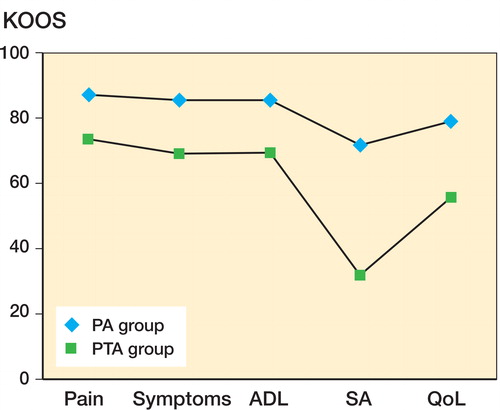Figures & data
Table 1. Summary of the main characteristics of the patients in the 2 groups
Table 2. Summary of the main characteristics of fractures and scar patterns in the PTA group
Figure 1. A typical case: a 60-year-old active man with a history of fracture of the medial tibial plateau. TKA required use of stems and augments and a muscular flap. At 8 years, the patient is doing well but still has limitation of flexion at 105° and is limited during his activities of daily living. The implant is radiographically stable.

Table 3. Medium-term results of clinical outcomes and range of motion (ROM) in both groups preoperatively and at the last follow-up. Values are mean (SD)
Figure 2. Postoperative results of the KOOS for the 2 groups (the primary arthritis (PA) group and the posttraumatic arthritis (PTA) group). ADL: activities of daily living; SA: sport activity; QoL: quality of life. There were significant differences between groups in all dimensions of KOOS (p < 0.001).

Table 4. Overall rate of complications a
